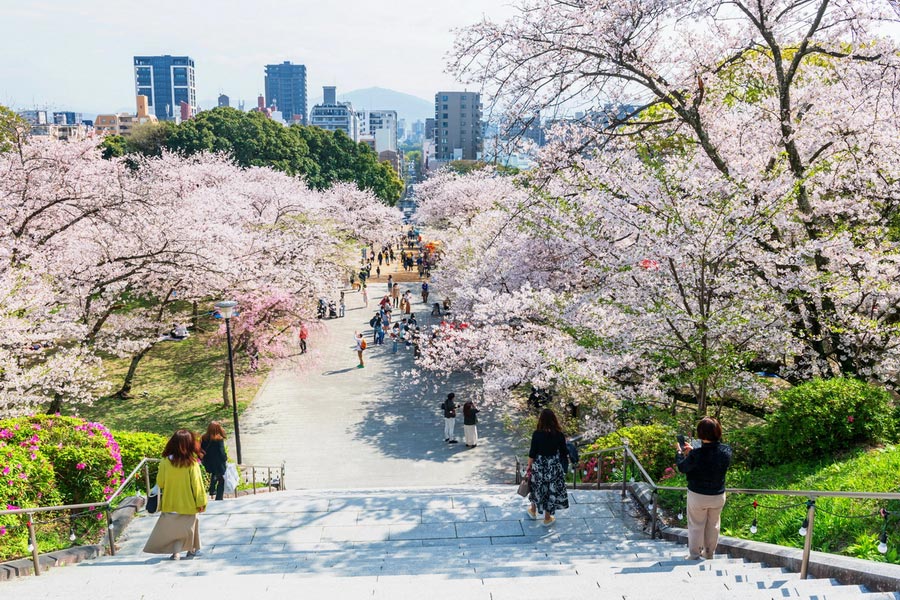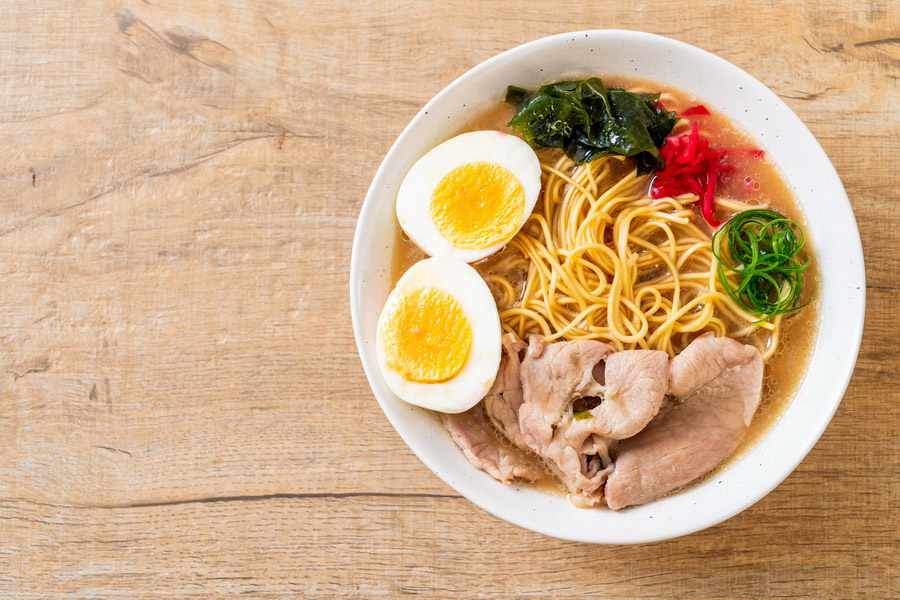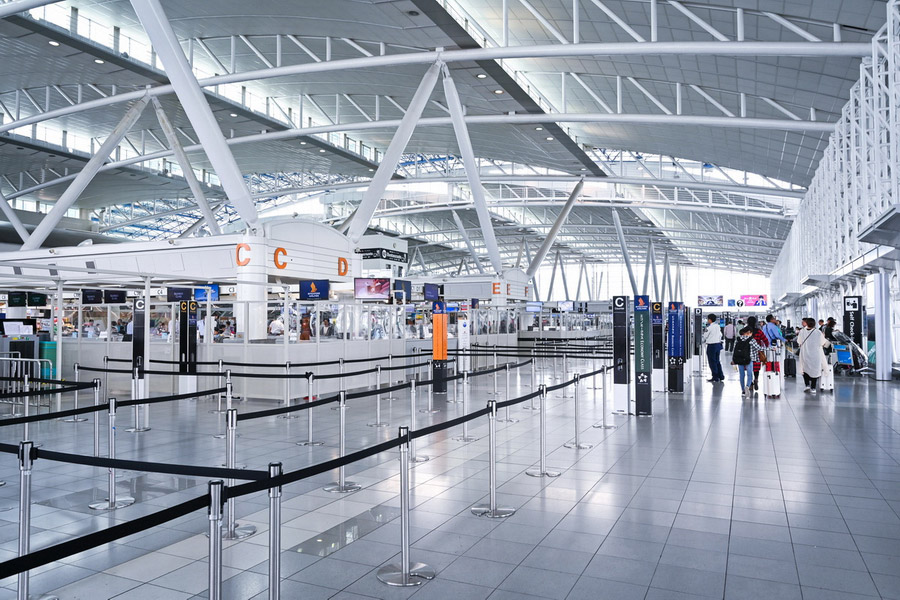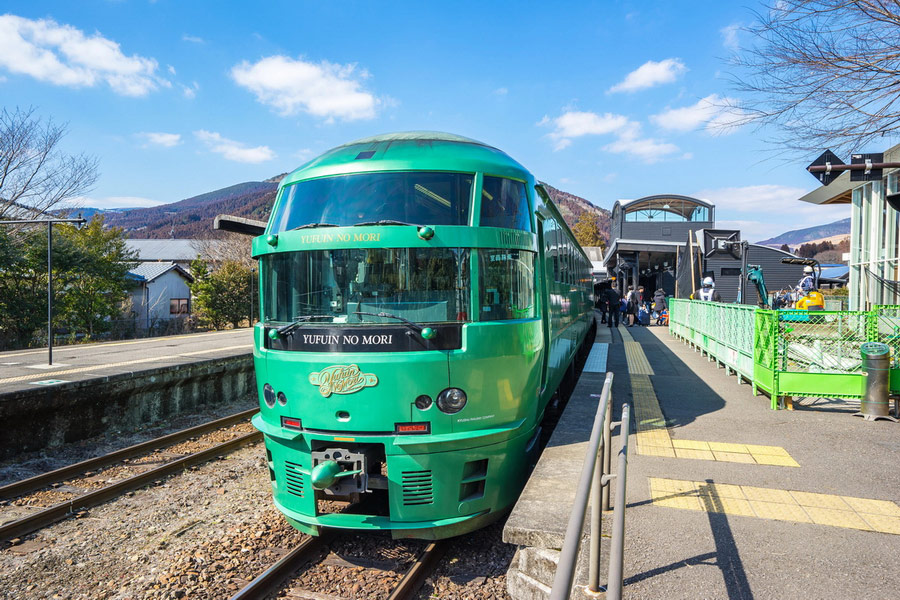Fukuoka, Japan – Travel

Tours, Attractions and Things to Do in Fukuoka
Fukuoka Travel Guide
Fukuoka is the sixth-largest city in Japan, located on the northern shore of Kyushu, boasting a beautiful location on Hakata Bay and mountains that encircle it from three sides. This harbor city, with a population of around 1.6 million, is celebrated for its delectable cuisine, especially ramen culture. Bustling stalls with street food on the southern end of Nakasu Island are a must-visit. Fukuoka also prides itself on its nature attractions, including Nokonoshima Island and Ohori Park.
Due to its remote distance from other vast regions of Japan, the city developed and preserved its own culture. It is closer to Busan and Seoul in South Korea than to Tokyo. Today’s Fukuoka was established in 1889 when Fukuoka (Samurai city) and Hakata (merchants' district) merged into one city.
Fukuoka Tours
Fukuoka tours can be arranged year-round. Foreign visitors should enjoy seeing the city any time, but spring and autumn are the best times to visit Fukuoka.
Thanks to its southern location, winter in Fukuoka and the rest of Kyushu is typically mild. Most people will feel comfortable exploring the city from December to February. Spring is dry and sunny. Late March and early April are the hanami and Golden Week times when the Japanese travel a lot and enjoy cherry blossoms. Summer (June-September) is rainy, hot, and humid in June and July. It’s better to avoid traveling to Fukuoka during this period.
History of Fukuoka
Fukuoka and its surroundings have a long history. Kofun, megalithic burial sites, are evidence of human migration from continental Asia to Northern Kyushu dating back to the Stone Age.
Fukuoka and Dazaifu Port have sometimes been associated with the same place. Situated 15 km south of the city, Dazaifu was the administrative capital of the area in 663 AD. Japanese ancient literary sources, coupled with archaeological excavations, demonstrate that this place played a pivotal role in the founding of Japan.
Yet one of the most notable historical periods of the region is the Mongol invasions. Most are familiar with the term “kamikaze”, but few know it originated in Hakata Harbor. And here's how it happened.
From 1268 onwards, the Mongol Emperor, Kublai Khan, made repeated attempts to conquer Japan, first by persuasion through numerous delegations and then by force. In 1274, he tried to invade Northern Kyushu with a fleet of 900 ships and an army of 33,000 warriors. But military miscalculations and severe storms thwarted this plan. Soon after, Japanese samurai built a 20-km stone barrier bordering Hakata Harbor, part of today’s Fukuoka City. The Japanese built many more fortifications. And it turned out to be wise.
In 1281, the Mongols again attempted to take over Japan. This time, they mobilized 140,000 soldiers and 4,000 ships. And it seemed that the 40,000 Japanese army stood no chance. However, severe storms once again came to the aid of the Japanese. A powerful typhoon destroyed Kublai Khan's army; the Japanese called it kamikaze (Divine Wind). Later, the term denoted suicidal attacks carried out by military pilots of the Japanese Empire against allied ships during World War II.
What to Do in Fukuoka
Landmarks and Attractions in Fukuoka

Travelers arriving at Fukuoka’s Hakata Station shouldn’t leave this place soon. It’s a transportation hub in the city that can take sightseers virtually anywhere in Japan, with plenty of shops, restaurants, and modern amenities. However, that’s not the reason to hang out there. Hakata Station can be your first point of the panoramic view over Fukuoka from the station's rooftop garden, Tsubame No Mori Hiroba, and even Tetsudo Jinja – Railway Shrine.
A must-visit landmark is the Kushida Shrine, just a 4-minute ride by subway from Hakata Station to Kushida Shrine Station. This Shinto sanctuary was built around 757 AD. It’s a tranquil place with gardens and sculptures – one of the revered shrines in Fukuoka. Guests can enjoy a pleasant stroll through its grounds and get a slip of paper with predictions.
The subway train from Kushida Shrine Station takes adventurers to Tenjin Station. Then, it is a 5-minute walk to Tenjin Underground Mall. Alternatively, good walkers can easily reach the spot by foot via the historic Fuku-Haku Deai Bridge. The shopping mall has heaps of souvenir shops, trendy boutiques, and all sorts of eateries.
The absolute Fukuoka attraction is the site of Fukuoka Castle Ruins in the middle of the city. The grounds of this historic place are also known as Maizuru Park. It becomes a major draw during the cherry blossoms.
Another place to enjoy Fukuoka views is Fukuoka Tower. From its 360-degree observation deck, guests can see the city’s sights.
Baseball fans should try to get tickets to watch a game at the Fukuoka Dome - a very recognizable building. But it isn’t only about the stadium. The facility is part of the Hawk Town entertainment complex, which can be a destination for family outings with children. It has an amusement park and teamLab.

A day itinerary in Fukuoka can be concluded by visiting an attractive location – Momochi Beach. Here, travelers can cool down in the sea waters, try surfing, and watch the beautiful sunset. To wind things down for the day, as an option, tourists may set out for a cruise from Hakata Bay.
Fukuoka Museums
Fukuoka's culture, displayed in several incredible museums and art galleries, is a vital part of its identity.
The Fukuoka City Museum, for instance, is a cultural feast revealed in the city's history that used to be a gateway of trade with Korea, China, and other countries. One of the highlighted exhibitions pays tribute to the renowned Japanese animation studio Ghibli.
Arts and crafts lovers as well as contemporary art admirers can explore various museums. The Hakata Traditional Craft Center, near the Kushida Shrine, has impressive displays of Hakata silk and dolls. The Asian Art Museum will broaden one’s horizons on modern Asian art, reflecting diverse social themes and art genres. All these feature inquisitive architectural spaces, mostly Western architectural trends.
Fukuoka Theaters
Foreign visitors to Japan often attend a kabuki theater in Tokyo or Kyoto – Japan’s cultural capital. But those who haven’t done so and are currently in Fukuoka can experience a traditional Japanese drama at the Hakataza Theater, a stone's throw from the Fukuoka Asian Art Museum. Once at the hall, expect a slow show accompanied by a dance, drama, and music composition. All actors wear dazzling traditional clothes and makeup – kumadori.
Entertainment, Parks, and Shopping in Fukuoka
Parks

Fukuoka Prefecture offers exciting opportunities to explore its temples, castles, and charming public parks, perfect for rejuvenating walks among lush greenery.
The first one is Ohori Park, next to Fukuoka Castle in the central part of the city. Hundreds of shells are launched here during a fireworks festival. The walking path around the pond stretches almost two kilometers. There’s something for everyone in Ohori Park: Art lovers may enjoy a collection of paintings and sculptures in the Fukuoka Art Museum, or, for example, families may opt to stay by the lake to watch turtles, ducks, herons, fish, and birds. Nestled comfortably among beech, evergreen oak, camphor, and over a thousand cherry trees and flowers is Nishi Park - overlooking Hakata Bay. It's easily accessible from Ohori Park by subway. Meanwhile, the Hakata Port Tower is elegantly standing as a symbol of Hakata Bay and a landmark of Fukuoka.
Another waterfront place for leisure and picnicking is Uminonakamichi Seaside Park on a narrow peninsula, which is just a 20-minute ride on a ferry from Monomichi Seaside Park. Its territory encompasses flower gardens, sports fields, playgrounds, and an aquarium. Renting a bike is highly recommended because the park area is vast.
One of the highlights for flora enthusiasts must be Nokonoshima Island Park. It is a magnificent display of blooming daffodils in winter; in spring, the park turns into a parade of yellow nanohana blossoms, competing with cherry blossoms and a seaside scene.
Shopping in Fukuoka

One of the favored shopping districts in Fukuoka is Tenjin. The district is in the city's heart and has distinguished department stores like Iwataya, Mitsukoshi, and Daimaru, which sell luxury brands, including posh cosmetics, jewelry, and fashion. And that’s the place to purchase gourmet food gifts.
Daimyo, next to Tenjin, is a hipster neighborhood with great bars, clubs, and nightlife and an exciting shopping destination in Fukuoka. Its alleys are full of vintage boutiques and trendy shops. Food connoisseurs will find Korean and Western restaurants here.
Canal City Hakata is probably Fukuoka’s best shopping mall. It’s built around the canal, providing a relaxed shopping experience amid green areas along the water, the fountains, and seasonal illuminations. Vacationers can browse dozens of shops, from expensive brands to affordable fashion spots. In addition, the mall boasts a mouth-watering food court of various cuisines.
Only 15 minutes from JR Station, LaLaport Fukuoka is a modern shopping center with various stores, including Japanese clothing brands. The mall’s highlights are the giant Gundam statue and the animation show that begins at 7 PM.
While Across Fukuoka is another excellent shopping and commercial center, it’s worth checking due to its architecture, making it an urban oasis. A specially designed hiking path with trees on both sides takes guests to the 14th floor, exposing them to great views over Fukuoka.
A whole different way of shopping can be done in the Kawabata Shopping Arcade. Like Shinsekai in Osaka or Asakusa in Tokyo, it is the oldest shopping street in Fukuoka, where one can get a feel of traditional local culture. In Kawabata, tourists will find kimono and gift shops, traditional ware, and origami shops. Here, you can taste the famous Kawabata red bean soup with a rice cake – mochi.
Another place to experience the old atmosphere of Hakata is the Shintencho Shopping District. The Hakata merchants established it after World War II in 1946. Important cultural events take place here, including Hakata Dontaku. Shintencho’s landmarks are a large clock tower and the Shintencho Sun Dome.
Food in Fukuoka
Situated close to the Asian mainland and with a bounty of the sea ready at hand, Fukuoka has an exciting food tradition influenced in part by Korean and Chinese cultures.
The city is known for yatais – food stalls on major pedestrian roadways that operate only at night. These carts serve almost everything from ramen to hot pot dishes. Yet Fukuoka has many restaurants in/around central districts and shopping malls.
Here are several specialties to try associated with the city.
Tonkotsu Ramen

Tonkotsu, or Hakata ramen, is a specialty dish of Fukuoka's cuisine scene. It is a soup based on a broth from pork bones and made with noodles, pork belly, eggs, and tare. Other ingredients used for flavoring and toppings of this Japanese dish include garlic, spring onions, ginger, and eggs. The secret of the rich broth is that it must boil for at least 12 hours.
Mentaiko and Saba
The delicious seafood of Fukuoka is unquestionable. Some of the best dishes, such as mentaiko and saba, can be tried at the Yanagibashi Rengo Market and Nagahama Fish Market. Adopted from Korea, mentaiko is code roe, which can be eaten alone or with other ingredients. Japanese grocery stores even sell mentaiko pasta.
Goma saba (mackerel) sashimi, especially sesame mackerel, is a heat food in Fukuoka. The toasted slices of goma saba in sesame seeds are a popular street snack in the city.
Tetsunabe Gyoza
Tetsunabe gyoza is a Japanese variation of dumplings that came to Fukuoka from China. These bite-sized gyoza are filled with juicy meat and then grilled until golden and crispy in a heavy cast iron pan called tetsunabe.
Motsunabe

Motsunabe is another very typical dish of the Fukuoka area and Kyushu. Beef or pork offal is cooked in a miso-based soup with cabbage and spring onions. Japanese love to experiment, so their recipes may include meats, mushrooms, and even noodles. For a truly authentic experience, head for the Hakata Motsunabe Yamanaka Hakata Branch to try its Vinegared Beef Motsunabe and Roe.
Hakata Amaou Strawberries
Amaou strawberries are grown in Fukuoka Prefecture and are highly valued for their large size, sweetness, and juiciness. The picking season starts in winter and continues until April. A few greenhouses or farms welcome anyone for plucking, with an opportunity to pack up strawberries by weight at affordable prices. These sweet fruits are an excellent treat on a hot day.
How to Get to Fukuoka

Due to the extensive network of airplanes, trains, buses, and boats, getting to Fukuoka is easy.
By air
Just a 5-minute ride from Hakata Station, Fukuoka Airport (FUK) is conveniently located in the city center. Skymark Airlines, JAL, ANA, Jetstar Airways, and Peach Aviation operate flights from Tokyo’s Haneda Airport and Narita Airport. The one-way fare from Tokyo to Fukuoka may cost 5,000 yen to 45,000 yen, depending on the airline and available discounts.
To get to Hakata or Tenjin Station from FUK, travelers can take a train, bus, or taxi.
By train
The best way to travel between Tokyo and Fukuoka is by the bullet train (Tokaido/Sanyo), which arrives at Shin-Kobe Station. The trip on the Nozomi train takes 5 hours, while the ride on the Hikari or Sakura train with a transfer at Shin-Osaka Station requires 6 hours.
Useful links: japanrailpass.net; jreast.co.jp; westjr.co.jp; kintetsu.co.jp
By bus
If you travel to Fukuoka from Tokyo’s Shinjuku Station by bus, the preferred option is the Willer Express overnight bus, which takes about 14.5 hours.
Useful link: willer-travel.com
By ferry
The Ocean Tokyo Ferry runs daily between Tokyo Ferry Terminal on Odaiba and Kitakyushu at Shin-Moji Port. The journey takes about 34 hours. A shuttle taxi from Shin-Moji Port takes people to Moji Station. From Moji Station, the fastest way (35 minutes) to get to Fukuoka is by Shinkansen via Kokura.
Useful link: directferries.com
Getting Around Fukuoka

Being a port city, Fukuoka has a wide selection of public transport that covers everything from subway to ferry. The standard transport options are JR Railways, Nishitetsu Railways, bus networks, and three subway lines. Foreign visitors can leverage the Open Top Bus to tour major attractions, including the Tenjin district, Hakata, and Seaside Momochi areas.
Kobe Travel Passes
The 1-Day Subway Pass provides unlimited access to Fukuoka’s subway lines during the day.
Designed specifically for foreigners, the Fukuoka Tourist Pass covers all trains, buses, subways, JR, and Nishitetsu in the city within one day. Adventurers can choose between two options: one can be used only in Fukuoka City, and the other, more expensive, includes Nishitetsu trains and operates to nearby Dazaifu.
A Fukuoka Wide Pass is highly recommended for trips around Fukuoka Prefecture and beyond its borders, stretching to Shimonoseki and Karatsu. It works best for side trips outside Fukuoka.
Sugoca, Nimoca, and Hayakaken Cards
Sugoca, Nimoca, and Hayakaken cards provide access to all trains, buses, and subways in the Greater Fukuoka region. These are IC Cards or prepaid rechargeable cards. But even if you have only a SUICA card or any other IC card, you can get around Fukuoka conveniently.
Taxi
While taxis can bring tourists anywhere, they tend to be pricey in Japan. Fukuoka Kotsu and Uber cater to taxi services in the city, and rides can be booked via mobile apps.
Bicycles
Fukuoka and its surroundings are bike-friendly. A few companies hire out bicycles per day or hour in Fukuoka. One of them is Cogicogi. The bike rental ports can be found by the Fukuoka Parco, Kushida Shrine, and other locations.
Fukuoka is also a great starting point for cycling routes around Fukuoka Prefecture. For example, the 78-km Fukuoka Itoshima Route offers stunning scenery with cafes, shops, and restrooms along the way.
Ferry
The ferry ride is the best way to get to Uminonakamichi and Shikanoshima Island. It takes only 15 minutes to reach those destinations. The ferry service connects Marizon (Seaside Momochi) and the Tosenjo ferry terminal of Uminonakamichi.
Safety in Fukuoka
In general, Japan is considered a safe country, including Fukuoka. Fukuoka residents are friendly and helpful, especially when it comes to guests. Yet exercising extra caution and common sense to avoid unwanted attention will never hurt, particularly when strolling during night hours.
For earthquake and tsunami warnings, follow the alerts of the Japan Meteorological Agency.

